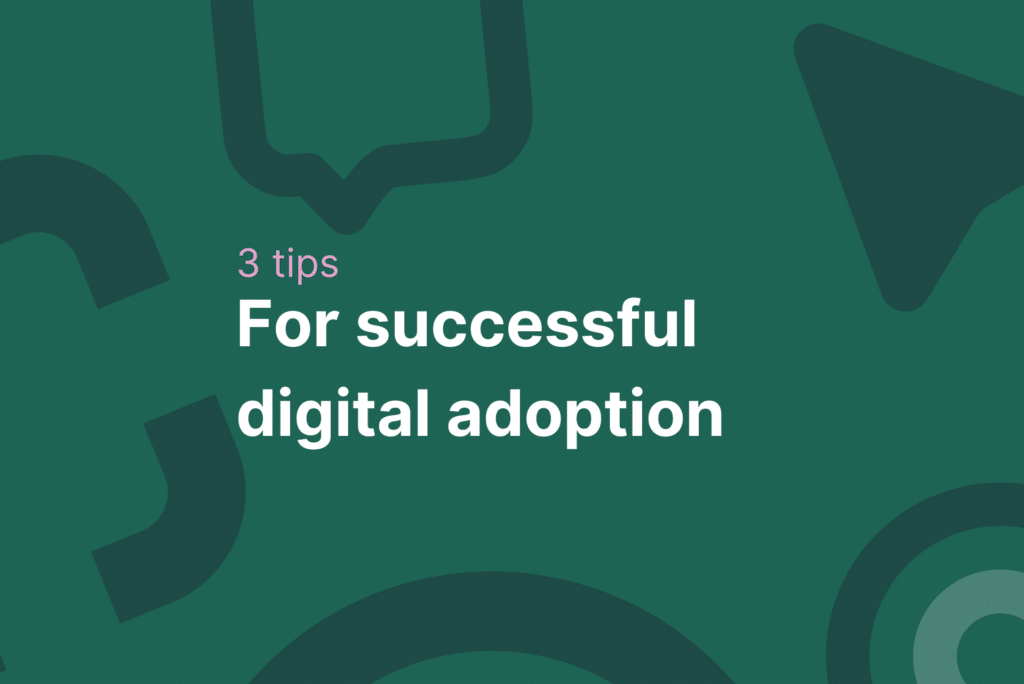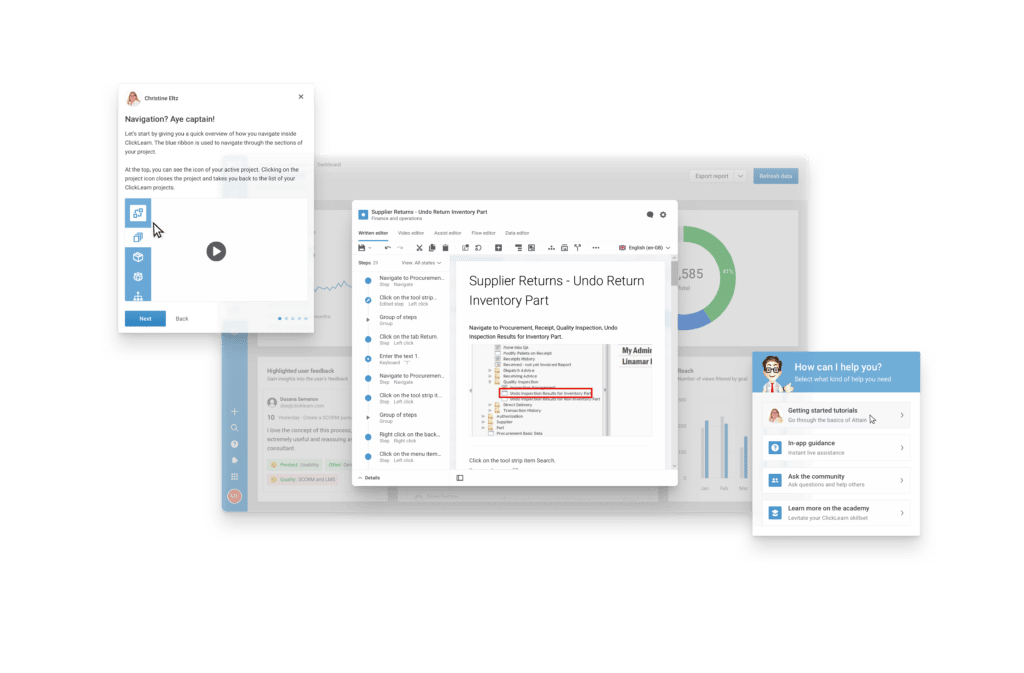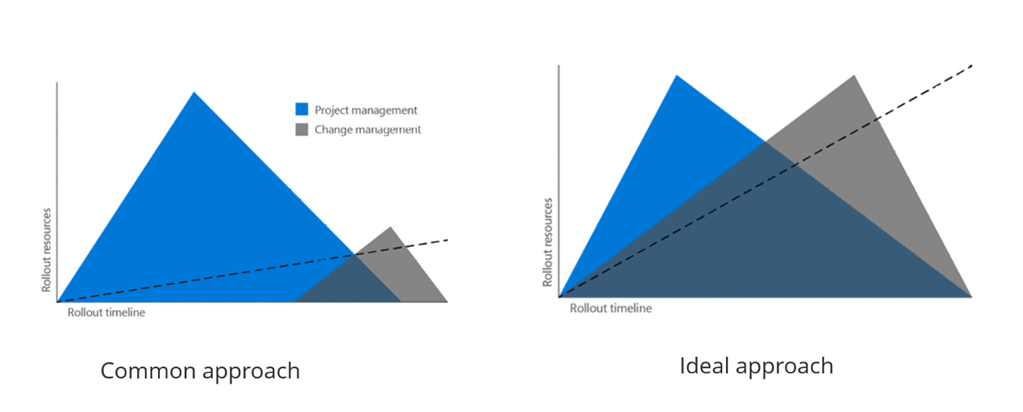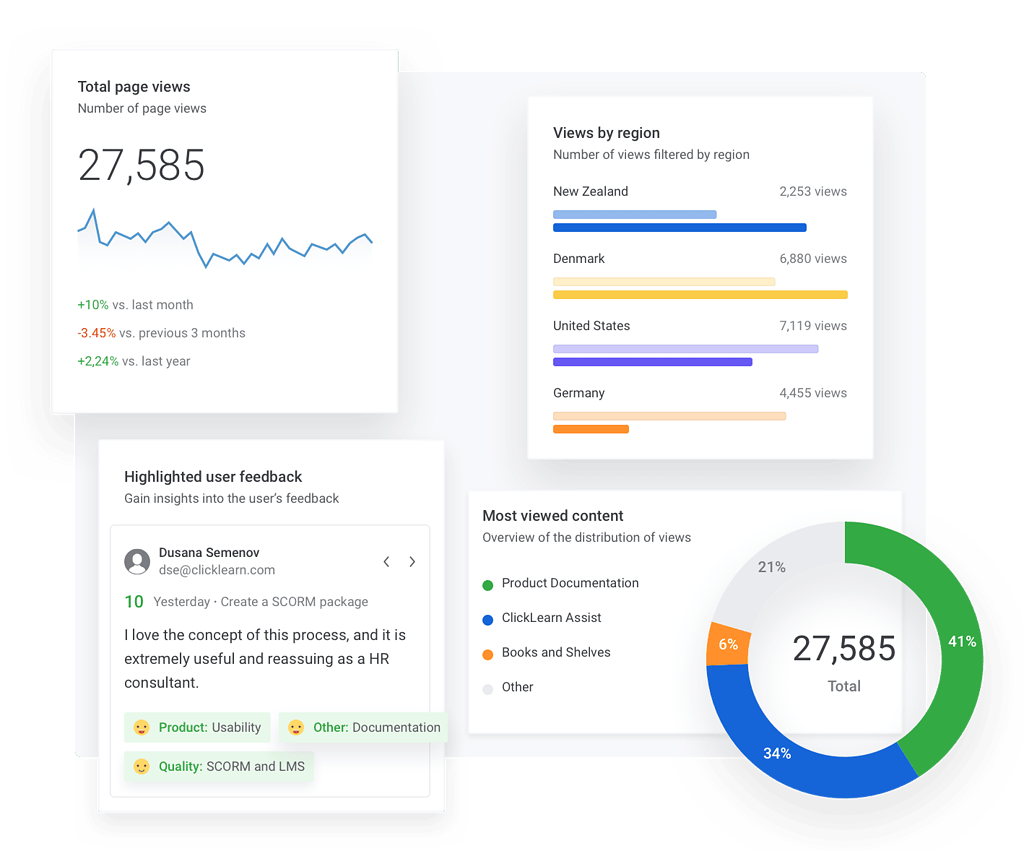Employee shortages
User adoption helps ensure the desired change, but for that to take place, you must address the following three things.
As the digital landscape continues to grow and adapt, so do the challenges faced by organizations and the people who work in them. No other time has this been more apparent than this past couple of years when the importance of digital transformation has become a question of survival for many businesses. Increasingly, companies are having to regroup and change their business model to be more digital and agile.
However, this is not enough—you cannot simply digitally transform without the necessary onboarding of your workforce. This important step is often left out in the scramble to implement new software and systems.
User adoption helps ensure the desired change, but for that to take place, you must do the following:
- Build a strong learning culture to drive engagement
- Manage the ever-changing landscape of software updates and upgrades
- Support learning in the flow of work
Tip 1: Build a culture for learning
When addressing the need for onboarding/training, how do you ensure the engagement of your employees in this process?
Users, groups, and organizations are often resistant to change—partly due to the fear of the unknown and partly a comfort in the status quo. This resistance can have a great impact on how motivated for change employees are.
Engagement and motivation go hand in hand. The following tips can have a positive effect on ensuring learner engagement:
- Relevance: learning should feel useful and solve a need for the user or organization.
Learning journeys should be based on learners’ reality – real-world practice with feedback and analytics, tailored to users’ specific tasks at a company level. Training content should always be relevant and up to date. - Involvement: users want to feel in control of their own learning.
Providing the opportunity for self-study, the ability to provide feedback on content, and any other way to involve the user in their learning is always a good idea. - Interest: users want to be stimulated! Learning content should be interesting, novel, and varied. Providing a variety of formats and targeting content to the user’s situation and context can help pique interest and curiosity.
- Instant feedback: users must receive recognition for their perception of success. Test learners’ knowledge, enable them to ask questions and apply their learning, for example, through interactive videos.
- Competence: users want to feel competent – any task should have the right balance of challenge – if it’s too easy, users get bored, it’s too difficult, they become stressed.
Content should be available at all levels so that users can advance to a higher level when they’re ready to do so. - Community: a sense of being part of a community is a strong motivator for most people, so any interaction or collaboration with others is a plus. The opportunity for collaboration and community should be worked into the training when possible.
Tip 2: Manage change
Because intrinsically, people don’t like change, and digital transformation is all about change—continuous change—it’s wise to give them time to adapt. For example, in an upgrade scenario, it could be a good idea to initially let the new application coexist alongside the existing systems. This not only results in less loss of productivity for experienced users, but it also allows them time to upskill to the new system.
With continuous updates as part of the course, organizations gain from having tools that make it painless to roll out a new update. Instead of waiting until they have no choice in the matter, updating regularly can save time, resources, and of course, money.
When it comes to managing change, Microsoft suggests thinking user adoption into the project in its initial stages. Typically Project management focuses on deployment planning and the technical side of things. Whereas change management—the human side of the transformation—focuses on the activities required to prepare organizations and their employees for the delivered change.
Image credit: Microsoft
In a traditional approach, the user focus is an afterthought. Rather than post-deployment training, the focus is to engage users in the process. Microsoft recommends introducing change management in parallel with project management, which takes advantage of super users as a resource and ensures that employees hit the ground running.
Tip 3: Support users in their flow of work
Experienced users don’t want to lose productivity and the skills they have worked hard to achieve. When faced with moving from an old system to a new one, this can be a daunting prospect.
Learning and working at the same time is difficult, it is hard to do your tasks and follow processes if these have changed. Compounding this is the issue that training often takes place as a single event, and if users are left too long without the chance to use the skills they’ve acquired, learning can be easily forgotten.
To support users in their flow of work, the contexts that they are in should be acknowledged and addressed. Different scenarios call for different formats, so step-by-step instructions are good as written documentation whereas watching a video for background info or technical demonstrations is preferable. Users bring with them their own learning styles and thinking their learning preferences into the content can increase learning impact dramatically. By making training seamless and easily accessible, for example, through a single log-in or by embedding it into their usual work environments, the chances of success are increased. Typically tasks aren’t limited to a single application, and nor should the training be – training in work processes should be across platforms to reflect the way that users work in their systems.
Recipe for success
So when it comes to any form of digital transformation, if you focus on building a solid learning culture, address the resistance to change in an ever-changing digital world, and provide training that reflects your users’ real-world scenarios, you have a recipe for successful digital adoption.
ClickLearn is the the future of training
With ClickLearn you can auto-produce training material, update and maintain your training material with a minimal effort, deliver a full e-learning experience and guide the end-users within your live system with a virtual assistant.
Get hands-on with a free trial or book a demo with our experts.



